Leadwood Tree
- November 28, 2023
- 1 comment
The Leadwood tree, scientifically known as Combretum imberbe, is a remarkable and iconic tree native to the dry regions of southern Africa. Renowned for its resilience and ability to withstand harsh environmental conditions, the Leadwood tree is a deciduous species that can live for several centuries, with some specimens dating back over a thousand years.
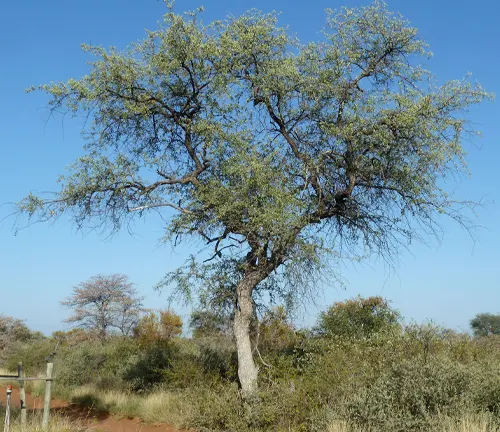
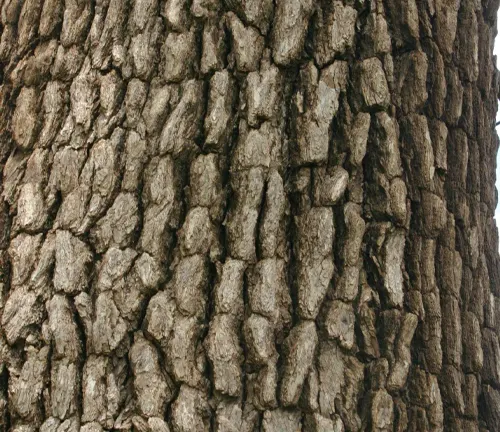
Its name, derived from the dense and heavy nature of its wood, reflects the tree’s durability and resistance to decay. The Leadwood is characterized by its distinctive grayish-brown bark, which peels away in long, thin strips, revealing a smooth, pale inner layer. Its twisted and gnarled branches add to its unique aesthetic appeal, especially when silhouetted against the African sunset.0
This tree holds cultural significance in many indigenous communities, with various tribes attributing spiritual and medicinal properties to its bark and leaves. Despite facing threats from habitat loss and climate change, the Leadwood tree endures as a symbol of strength and adaptability in the arid landscapes it calls home.
| Characteristic | Description |
|---|---|
| Scientific Name | Combretum imberbe |
| Native Regions | Southern Africa |
| Type | Deciduous |
| Lifespan | Several centuries, some over a thousand years |
| Bark | Grayish-brown, peels in long, thin strips |
| Wood Density | Dense and heavy |
| Branches | Twisted and gnarled |
| Cultural Significance | Important in indigenous communities for spiritual and medicinal purposes |
| Threats | Habitat loss, climate change |
| Notable Feature | Resilient and able to withstand harsh conditions |
| Symbolism | Represents strength and adaptability |
Botanical Beauty of the Leadwood Tree
In the arid landscapes of southern Africa, the Leadwood tree, scientifically known as Combretum imberbe, stands as a botanical marvel. Its distinctive grayish-brown bark peels away in long, thin strips, revealing a smooth, pale inner layer. The tree’s twisted and gnarled branches add to its unique aesthetic appeal, creating a silhouette that captures the essence of resilience and timelessness. Despite the harsh environmental conditions, the Leadwood tree remains a testament to the beauty that can be found in nature’s adaptation and endurance.

Woodland Elegance

One of the most remarkable features of the Leadwood tree lies in its wood. Renowned for its density and weight, the wood of Combretum imberbe is exceptionally durable. This density not only contributes to the tree’s longevity, with some specimens dating back over a thousand years, but it also adds to its elegance. The wood’s heavy nature has earned the Leadwood tree its name, further emphasizing its significance in both the natural world and human culture.
Ecological Importance
Beyond its visual allure, the Leadwood tree plays a crucial role in the ecosystems it inhabits. Thriving in the dry regions of southern Africa, it serves as a key species in arid environments. Its ability to withstand harsh conditions makes it a vital component of these ecosystems, providing shelter and sustenance for various forms of wildlife. The Leadwood tree’s presence contributes to the overall biodiversity and ecological balance of its habitat.

Cultivation and Conservation

While the Leadwood tree is well adapted to survive in challenging conditions, its populations face threats from habitat loss and climate change. Conservation efforts are underway to protect and preserve these iconic trees. Understanding the conditions under which the Leadwood thrives is essential for successful cultivation and conservation initiatives. Efforts to safeguard its habitat ensure that future generations can continue to marvel at the botanical beauty and ecological importance of the Leadwood tree.
Fragrance
In addition to its visual and ecological significance, the Leadwood tree carries a subtle yet distinctive fragrance. The scent, emitted by its leaves and bark, adds another layer to the sensory experience of encountering this remarkable tree. It is a fragrance that whispers of resilience and the untamed beauty of the African wilderness.
Soil Stabilization
The Leadwood tree’s roots play a crucial role in soil stabilization. In the often arid and challenging environments where it thrives, these roots help prevent soil erosion. This feature is particularly important for maintaining the integrity of the ecosystem, ensuring the sustainability of the surrounding flora and fauna.
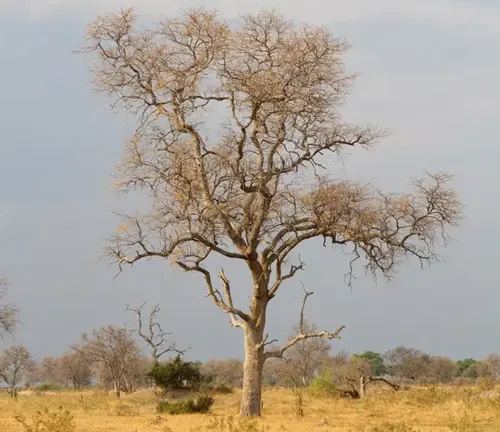
Common Uses

Throughout history, the Leadwood tree has been utilized for various purposes by indigenous communities. Its dense wood has been employed in crafting tools, implements, and even shelter. The cultural significance attached to the tree extends beyond its physical uses, with many communities incorporating it into rituals and ceremonies.
Benefits
The benefits of the Leadwood tree extend far beyond its immediate surroundings. As a resilient species, it contributes to the overall health of ecosystems, supporting biodiversity and ecological balance. Its wood, though exceptionally dense, is valuable for various human applications, reflecting a harmonious relationship between nature and culture. Recognizing and appreciating the benefits of the Leadwood tree is essential for fostering sustainable coexistence with this extraordinary botanical species.
Different Species
Combretum apiculatum
(Knobby-Leaved Combretum)
This species, also known as the Knobby-Leaved Combretum, is found in parts of Africa, including South Africa and Zimbabwe. It shares some similarities with Combretum imberbe but is a distinct species with its own unique characteristics.
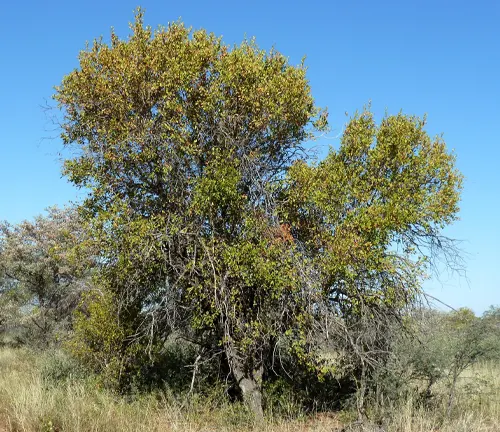
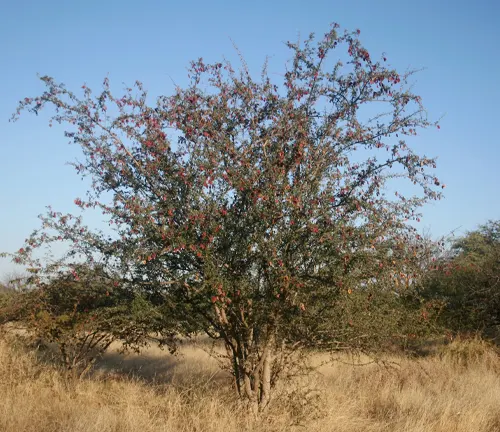
Terminalia prunioides
(Purple-pod Terminalia)
Sometimes referred to as leadwood in East Africa, Terminalia prunioides is a deciduous tree found in various African countries, including Kenya and Tanzania. It is valued for its hard and durable wood.
Frequently Asked Questions (FAQs)
- What is a Leadwood tree?
The Leadwood tree, scientifically known as Combretum imberbe, is a species native to southern Africa. It is renowned for its dense and heavy wood, resilience in harsh environments, and distinctive appearance. - Where is the Leadwood tree found?
Leadwood trees are primarily found in the dry regions of southern Africa, including countries like South Africa, Namibia, Botswana, Zimbabwe, and Mozambique. - How long does a Leadwood tree live?
Leadwood trees are known for their longevity, with some specimens living for several centuries. There are even instances of Leadwood trees that are over a thousand years old. - What are the characteristics of the Leadwood tree?
The Leadwood tree has grayish-brown bark that peels away in strips, twisted and gnarled branches, and dense, heavy wood. Its unique appearance and ability to endure challenging conditions make it a distinctive species. - Why is it called the Leadwood tree?
The tree is named for its dense and heavy wood, which resembles the weight and density of lead. This characteristic wood contributes to the tree’s resilience and durability. - What is the ecological importance of the Leadwood tree?
Leadwood trees play a crucial role in arid ecosystems, providing shelter and sustenance for wildlife. Their ability to withstand harsh conditions contributes to the overall biodiversity and ecological balance of their habitats. - Is the Leadwood tree endangered?
While the Leadwood tree is not currently classified as endangered, certain populations face threats from habitat loss and climate change. Conservation efforts are underway to protect and preserve these iconic trees. - Are there different species of Leadwood trees?
The term “Leadwood tree” commonly refers to Combretum imberbe, but there are other species in different regions that may be referred to as leadwood. These include Combretum apiculatum and Terminalia prunioides. - How is the Leadwood tree used by local communities?
Indigenous communities have historically used the dense wood of the Leadwood tree for various purposes, including crafting tools, implements, and shelter. The tree also holds cultural significance in rituals and ceremonies. - What are the conservation efforts for the Leadwood tree?
Conservation initiatives focus on protecting the habitat of Leadwood trees and addressing threats such as habitat loss and climate change. Understanding the tree’s cultivation requirements is essential for successful conservation.


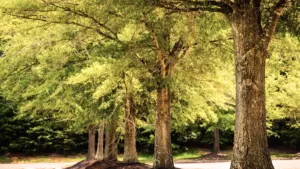

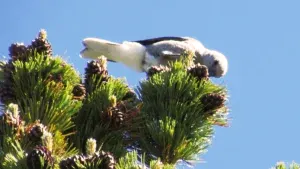
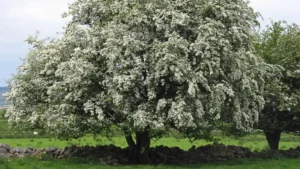
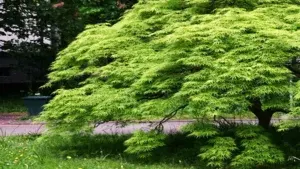
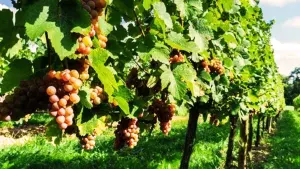
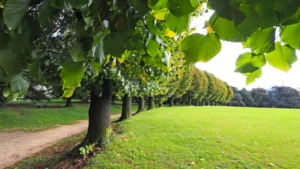

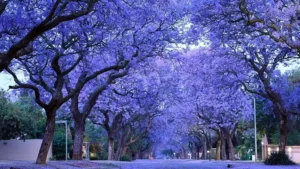



Well explained and summarized, thanks for the information...
Charlie
April 6, 2024 12:58 pm